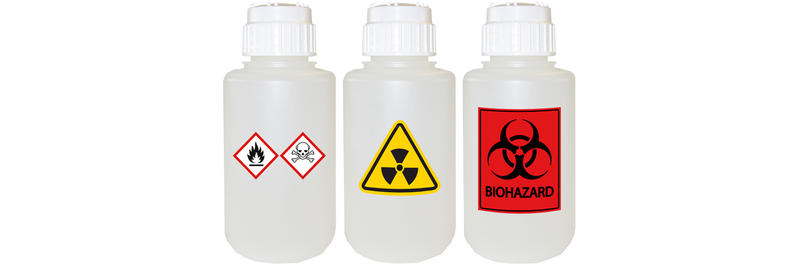The Of Reclaim Waste
The Of Reclaim Waste
Blog Article
Rumored Buzz on Reclaim Waste
Table of Contents10 Simple Techniques For Reclaim WasteThe 10-Minute Rule for Reclaim WasteNot known Details About Reclaim Waste How Reclaim Waste can Save You Time, Stress, and Money.The Reclaim Waste Statements
Residential sewage waste refers to the waste and items from a domestic septic container. The proper administration and disposal of domestic sewer waste call for fluid waste to be moved to a sewer therapy plant where the appropriate techniques and devices are used to purify and dispose of waste.
Industrial waste commonly consists of potential threats, such as flammable materials or a mix of liquid and strong waste products, and needs a more sophisticated and detailed disposal process. The disposal of business waste commonly involves the filtering of waste prior to transport to make certain safe and proper disposal. Industrial waste is created from byproducts and overflow of industrial procedures and production.
This sort of waste can not use the very same sewer monitoring transport or processes as septic or commercial fluids. The hazardous waste management process needs the evaluation and testing of fluid waste before it undertakes the disposal process (liquid waste removal melbourne). Drainage waste is the fluid waste that comes from drainage and excess stormwater in very populated areas or cities
Overflow waste can cause contamination and flooding if not dealt with correctly. Discover more about sewage system cleaning and waste administration. Making sure appropriate waste administration can stop catastrophes and reduce ecological harm. Both individuals in property settings and specialists in commercial or manufacturing sectors can gain from recognizing the procedures and guidelines of liquid waste management.
Top Guidelines Of Reclaim Waste
Get in touch with PROS Providers today to find out regarding our waste management and disposal solutions and the correct means to care for the liquid waste you produce.
(https://penzu.com/p/1f225eb6893bd9aa)Do you understand what takes place to your water when you disengage, flush the commode or drain the cleaning maker? No? Well, it's worth recognizing. This so-called 'wastewater' is not just an important source but, after therapy, will be released to our land, rivers or the ocean. Utilized water from toilets, showers, bathrooms, cooking area sinks, washings and industrial processes is referred to as wastewater.

water utilized to cool machinery or tidy plant and tools). Stormwater, a form of wastewater, is drainage that moves from agricultural and urban areas such as roofing systems, parks, gardens, roadways, courses and rain gutters right into stormwater drains, after rain. Stormwater streams unattended straight to neighborhood creeks or rivers, at some point reaching the ocean.
Some Of Reclaim Waste
In Queensland, most wastewater is dealt with at sewage therapy plants. Wastewater is moved from domestic or commercial websites with a system of sewage systems and pump terminals, understood as sewerage reticulation, to a sewer treatment plant.
The Division of Natural Resources recommends regional federal governments regarding handling, operating and maintaining sewerage systems and treatment plants. In unsewered locations, local governments may need owners to mount individual or household sewer treatment systems to deal with domestic wastewater from bathrooms, cooking areas, restrooms and laundries. The Department of Natural Resources authorises the use of household systems when they are shown to be effective.
Most stormwater obtains no treatment. In some brand-new class, treatment of some stormwater to get rid of litter, sand and crushed Homepage rock has started using gross contaminant traps. Wastewater therapy takes place in four stages: Gets rid of strong matter. Larger solids, such as plastics and various other items mistakenly discharged to drains, are eliminated when wastewater is travelled through displays.
Wastewater after that moves into large storage tanks where solids settle and are eliminated as sludge. Oil and residue are skimmed from the surface. Uses little living microorganisms called micro-organisms to damage down and get rid of continuing to be dissolved wastes and fine particles. Micro-organisms and wastes are incorporated in the sludge. Removes nitrogen and phosphorus nutrients that could create algal blossoms in our waterways and threaten water life.
The 10-Minute Rule for Reclaim Waste
Nutrient removal is not offered whatsoever sewage treatment plants since it needs expensive specialised devices. It is ending up being a lot more typical in Queensland. Clear liquid effluent created after treatment may still contain disease-causing micro-organisms. If this effluent is released right into waterways such as rivers or the sea, the micro-organisms will eventually pass away out.

A lot of wastewater streams right into the sewage system. Under the Act, regional federal governments carry out authorizations and licences for eco relevant tasks (Periods) involving wastewater releases that might have a local effect.
The smart Trick of Reclaim Waste That Nobody is Talking About
Tracking supplies valid details about water high quality and can verify that permit problems are being fulfilled. The details obtained via surveillance supplies the basis for making water quality decisions.
Report this page